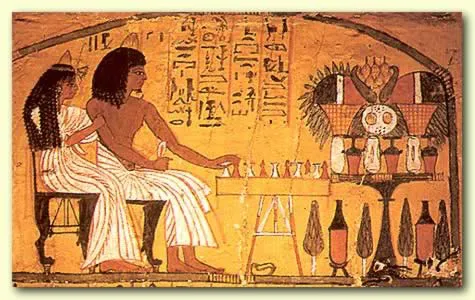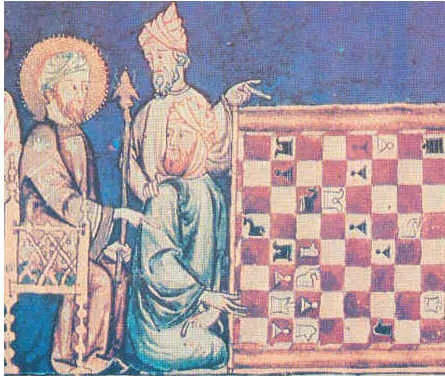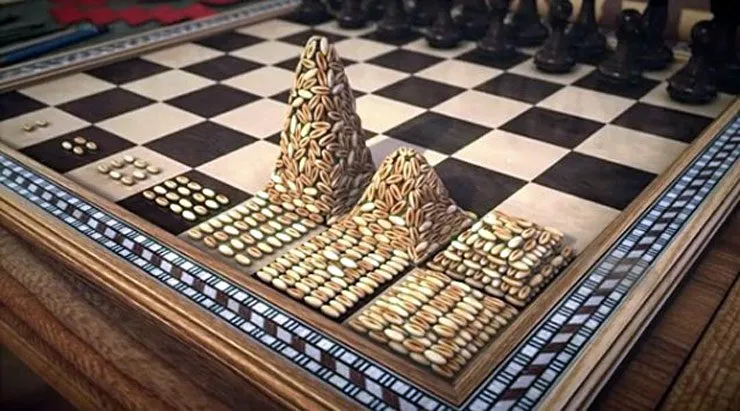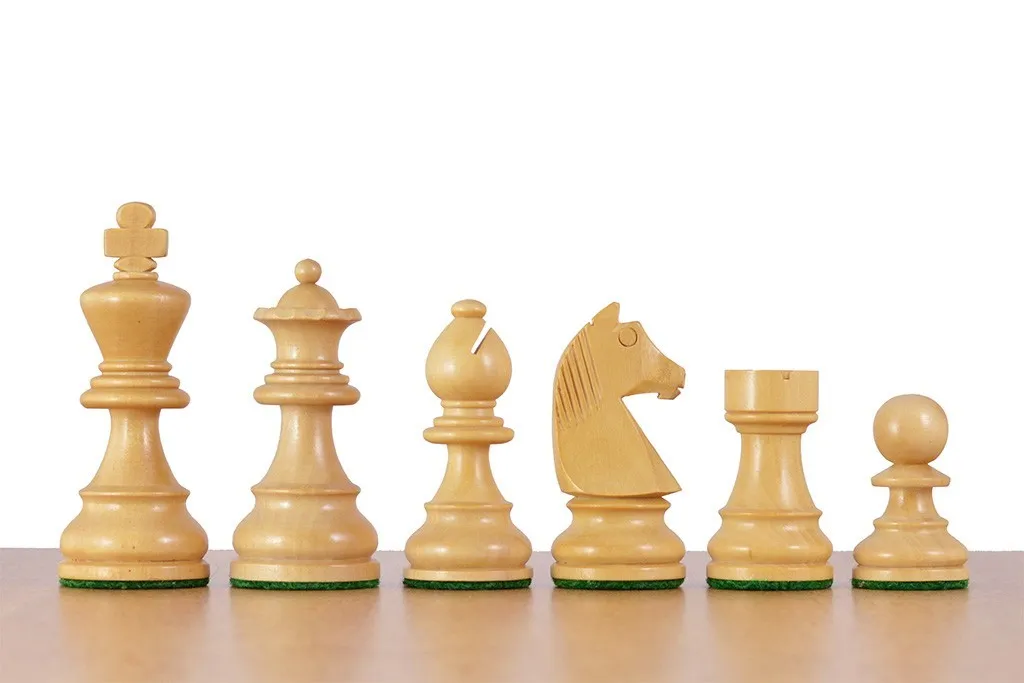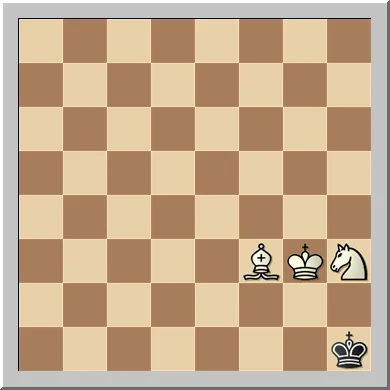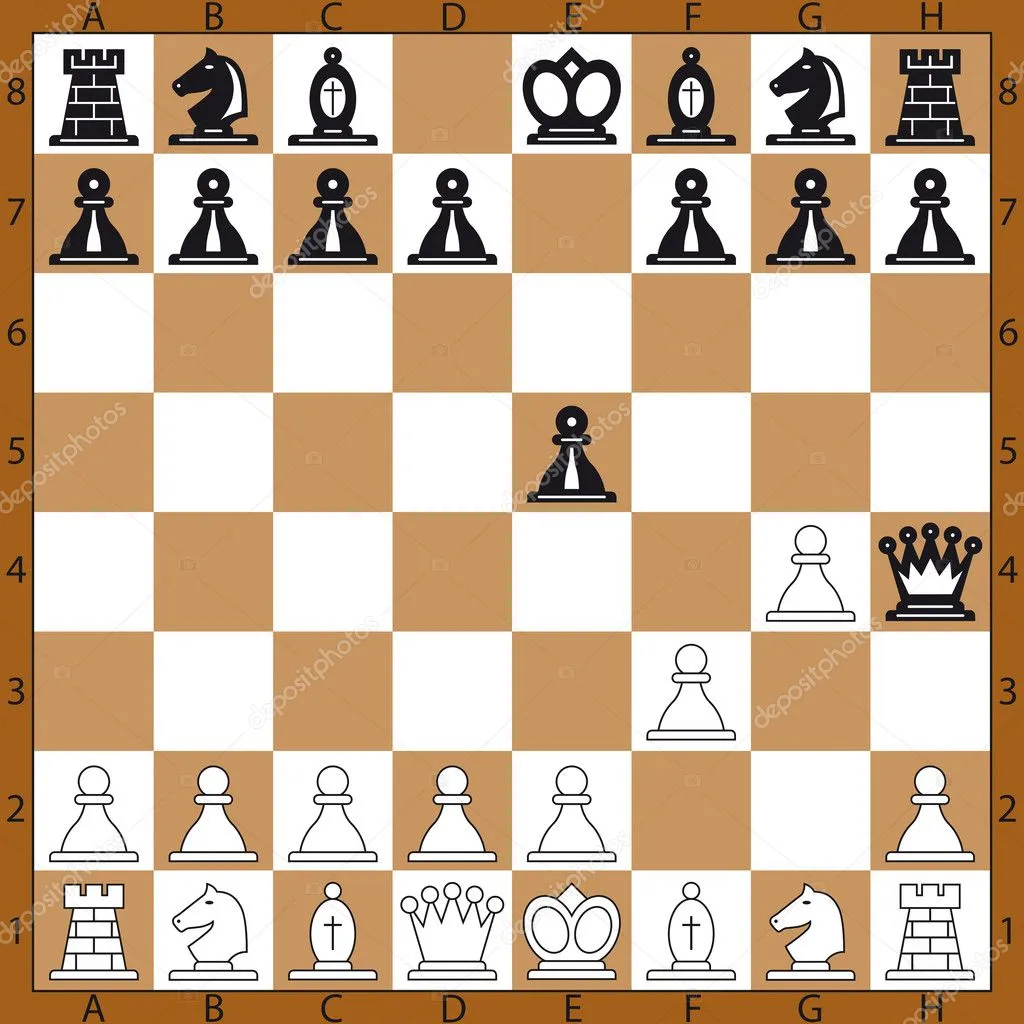El ajedrez: su historia y posiciones iniciales
 |  |
Saludos a la comunidad hive,
En la presente publicación, deseo hablarles sobre el Ajedrez. Este es un deporte al que le han dicho “Juego Ciencia” y se debe al hecho de ser un deporte en el que se deben cumplir con fases, prácticamente científicas y con tanta profundidad, que la misma geometría del campo de juego, es sumamente compleja. En ese sentido, cuando se juega al ajedrez profesionalmente, se deben conocer conceptos e historia sobre las diversas partidas que puedan jugarse o se hayan jugado con anterioridad. Además, se debe decir que en este deporte, se debe estudiar mucho, me atrevería a decir que más que algunas carreras universitarias.
Sin duda alguna, es uno de los deportes más complejos que existen en el mundo y no me refiero con complejo, al hecho de ser complicado; sino más bien, al grado de alternativas y opciones que se pueden calcular dentro de una partida de ajedrez. Es sumamente impredecible lo que se puede presentar durante una partida de ajedrez. Hasta los más grandes jugadores del mundo, han tenido que perder partidas por errores de principiantes, que posteriormente, mediante un análisis, se determina que fue una toma de decisión o una jugada errónea que los lleva a un revés.
Es un juego en el que el análisis constante, es la premisa. Esto se debe a que hay que revisar constantemente cada jugada, no solo la jugada nuestra, sino la de nuestro contrario para prepararnos y hacer planes a corto, mediano o largo plazo durante la partida. Es más, el solo análisis de una jugada, puede llevar a miles de variantes y por lo cual, se deben hacer muchos análisis que permitan tomar la mejor decisión con base a lo que pretendemos durante la partida.

LA HISTORIA
Se dice, que este juego ha dado muchas vueltas por el mundo, ya que son varias zonas geográficas en las que se han encontrado muestras de haber estado presente. Sin embargo, las fuentes arqueológicas más aceptadas, consideran que su origen estuvo enmarcado en la región noroeste de la India con representaciones bastante altas, en el área de del actual Egipto. Por supuesto, así se diseminó por todas partes del mundo y ahora ha evolucionado a tal punto, que se juegan entre 2 personas.
Ya que se ha determinado, que su nombre originario fue Shatranj (Persa) lo que significa Chaturanga, haciendo referencia a un juego de guerra en el que participan 4 jugadores conduciendo a 4 ejércitos sobre un tablero, utilizando un dado para ejercer sus turnos y dentro de las piezas, se encontraban Caballos, Jirafas, Elefantes entre otros y como verán más adelante, en la actualidad muchas de esas piezas desaparecieron.

LA LEYENDA
Además de la historia científicamente comprobada, existe una hermosa leyenda en la que señala que el ajedrez, nació por la creatividad de un súbdito llamado Sissa, quien para agradar a su rey que, había enviado a su hijo a la guerra y lamentablemente lo perdió, hizo el juego y lo enseñó a jugar al rey. Gracias al juego, se dice que el rey recuperó la confianza, el reino volvió a surgir y además, aprendió nuevas estrategias en el arte de la guerra. Motivado a esto, el rey le ofrece al súbdito lo que quiera para recompensarlo, Sissa pidió granos de trigo por cada casilla del tablero así: 1ra casilla= 1 grano, 2da= 2 granos, 3era= 4, y así duplicando hasta la casilla 64.
Por supuesto, el rey con tono burlista aceptó y mandó a calcular los granos de trigo que debía entregar, para sorpresa del mismo rey, los matemáticos le dijeron que era imposible porque tardarían unos 1000 años en producir tal cantidad. Desde ese momento, el rey nombró a Sissa como ministro y pasó el resto de su vida jugando al ajedrez.

EL TABLERO DE JUEGO
El tablero de juego, es el lugar donde realmente se lleva a cabo la partida y en él se ubican las piezas que deben tener un orden específico antes de iniciar la partida. Este tablero consta de 64 casillas (32 blancas y 32 negras), dispuestas en 8 columnas por 8 filas y la que cada jugador posee 16 piezas cada uno, es decir; 1 jugador con 16 piezas negras y otro jugador con 16 blancas.
Dichas piezas tienen movimientos exclusivos que deben conocerse para llevar a cabo la partida. Los turnos son definidos en relación a las reglas, en las cuales la persona que lleva piezas blancas, debe hacer el primer movimiento de la partida, y así se turnan después de cada movimiento: 1 jugada blancas y 1 jugada las negras y así sucesivamente.
Es necesario señalar, que en la actualidad hay tableros de diferentes colores, tomando en cuenta los estudios sobre el efecto en los ojos de los jugadores. Es decir, desde sus inicios el tablero era de casillas blancas y negras, pero en vista de las confusiones o sensaciones al ver las piezas negras entre escaques negros o blancos, se decidió usar tableros con colores más claros, cambiando de esta forma el tablero original y permitiendo una mejor relación entre el jugador y el tablero de juego, en cuanto a los efectos negativos en la vista.
Por supuesto, también se puede decir que los hay de diferentes materiales, madera, plástico, cartón, telas entre otros. Asimismo, se les ha agregado letras para diferenciar las columnas y números para diferenciar las filas. Esto de los números y letras, realmente es una cuestión para utilizar en las escrituras durante las partidas, sobre todo para su posterior análisis. En ese sentido, habrá cada columna con una letra desde la “a” hasta la “h” y en las 8 filas, números desde el “1” hasta el “8”.
En cuanto a la posición inicial del tablero, se debe señalar que antes de colocar cualquier pieza, se tiene que tomar en cuenta la posición de la columna que esté ubicada a nuestra mano derecha. Esto se debe, a que la casilla que debe quedar a nuestra derecha debe ser de color blanca. Así que al colocar el tablero, debemos observar que nuestra columna ubicada a nuestra mano derecha debe iniciar con una casilla blanca. De la misma forma, el jugador contrario a nosotros, debe tener presente lo anterior. Una vez tener la posición del tablero correctamente, procederemos a colocar las piezas.
 | 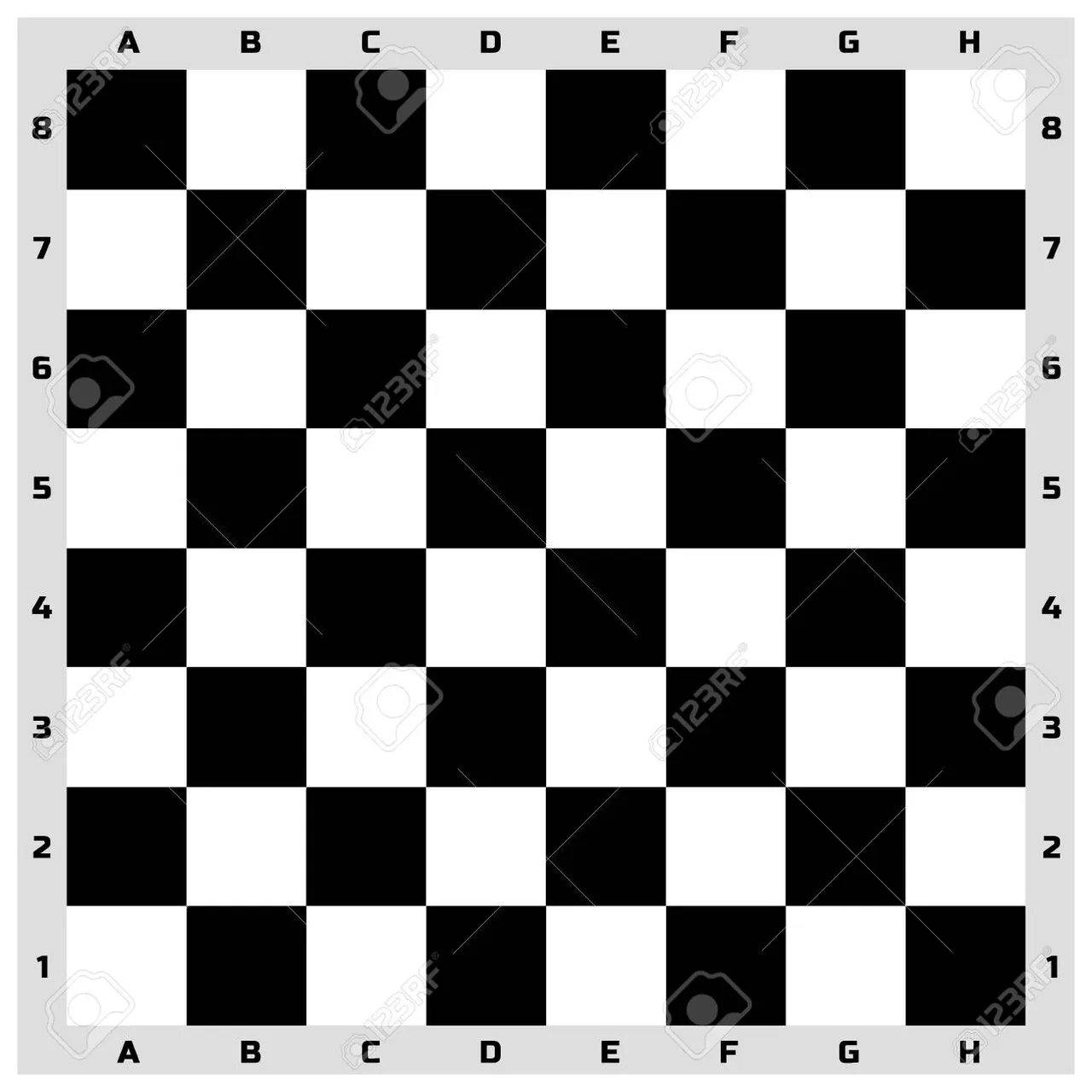 |

LAS PIEZAS
Las piezas en el Ajedrez, son en total 32 divididas como se dijo anteriormente, en 16 piezas blancas para un jugador y 16 piezas negras para otro jugador. Cada una de ellas tiene su nombre y poseen un número específico de piezas por cada bando antes de iniciar la partida como sigue a continuación:
Peones (8 por bando)
Torres (2 por bando)
Caballos (2 por bando)
Alfiles (2 por bando)
Damas (1 por bando)
Reyes (1 por bando)
Para la posición inicial de cada pieza lo primero es que: Ubicamos en la 1era fila de nuestro lado, luego de revisar lo planteado de la casilla derecha color blanco, todas las piezas grandes, es decir, todas menos los peones. El orden más fácil es así:
* En cada esquina colocamos 1 Torre.
* Seguidamente al lado de cada Torre, se coloca 1 Caballo.
* Siguiendo adelante con el orden, al lado de cada Caballo, colocaremos 1 Alfil.
* Una vez teniendo estas piezas, debemos colocar el Rey y la Dama, para ello tomaremos en cuenta una pequeña regla de oro: “La Dama va en la casilla del color de las piezas que estamos acomodando”, es decir, como ya nos queda solo 2 casillas, colocaremos la Dama en la casilla del mismo color a las piezas que tenemos en mano, si estamos arreglando las piezas de color Blanco la Dama va en la casilla blanca y si las piezas son las negras, entonces la dama va en la casilla negra.
* Por supuesto, el Rey va en la casilla que sobra.
* Por último, colocaremos los Peones en cada casilla de la segunda fila.
A continuación una pequeña imagen al respecto:
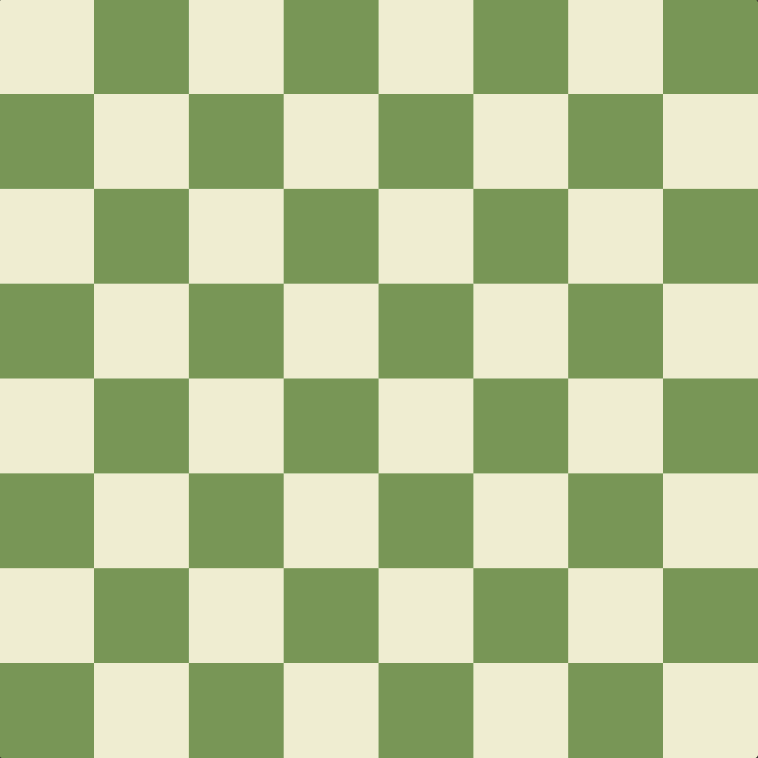

EL JUEGO
En primer lugar, debo decir que cada pieza tiene movimientos específicos y los cuales dan la oportunidad de iniciar el juego hasta poder terminarlo. A diferencia de otros juegos, en los que vencen quien haga más anotaciones o quien tenga más piezas, en el ajedrez se gana haciendo “Jaque Mate” al rey contrario. Así que de nada sirve que tengas un número elevado de piezas, si te hacen Jaque Mate al rey, has perdido la partida y por lo general; quien gana la partida en un torneo obtiene 1 pto, si pierde 0 pto y si hay igualdad se obtiene 0,5 pto.
A continuación se aprecian 2 imágenes de diferentes “Jaque Mate”, donde se observa que no importa el número de piezas:

REGLAS BÁSICAS
Como en todo juego, se deben seguir algunas reglas para determinar ya sea, el ganador o perdedor y por supuesto, las formas que se deba jugar. En ese sentido, debo señalar que las Reglas del Ajedrez vienen de parte de la Federación Internacional del Ajedrez (FIDE) y las cuales son para todo tipo de Torneos o juegos, ya sean a nivel profesional o entre amigos. En la actualidad, hay diferentes modalidades, en las que se colocan algunas pequeñas modificaciones de ciertas reglas, pero eso se realiza solo ara algunos estilos de juego en específico.
Todo lo descrito con anterioridad, son parte de las reglas FIDE, es decir, para todos y en cualquier parte del mundo, son básico la colocación y movimientos o número de piezas como se ha señalado en el presente post. Ahora bien, voy a dejar algunas reglas más a tomar en consideración durante un juego:
1.- La jugada inicial la realiza el jugador con piezas Blancas.
2.- Luego de tocar una pieza, es esa pieza la que se debe jugar; excepto dicha pieza no pueda moverse.
3.- Para tocar una pieza que se desea arreglar, se debe decir con voz fuerte la palabra: “Arreglo” o “Acomodo”.
4.- Antes del inicio de una partida, sobre todo a nivel profesional, se debe dar la mano al contrario, como gesto de cortesía. En el caso que esto no suceda, podría ser sancionado el Jugador y hasta perder dicha partida.
5.- Para algún tipo de reclamo, se debe llamar al Árbitro o Juez que generalmente, están cruzando durante el desarrollo de un Torneo.
6.- El uso de aparatos tecnológicos, ya sea computadores, teléfonos o cualquier otro que pueda interferir con el desarrollo de la partida, está prohibido y la sanción es la pérdida de la partida.

Ya para finalizar, le agradezco a personas como @stayoutoftherz y @schamangerbert por su apoyo constante, cada uno de ellos realiza torneos cada viernes y sábados. Es notable lo que ha hecho @schamangerbert que ha tenido el gran interés de realizar estos torneos cada sábado desde hace unos 4 años. Sigan adelante promoviendo el juego Ciencia.
Las referencias tomadas para esta publicación son de diferentes fuentes, en especial de los libros: José Raúl Ajedrecista, Preajedrez y Arbitraje para Docentes; todos del Uvencio Blanco
Chess: its history and starting positions
 |  |
Greetings to the hive community,
In this post, I want to tell you about Chess. This is a sport that has been called "Science Game" and it is due to the fact that it is a sport in which phases must be met, practically scientific and with such depth that the geometry of the playing field itself is extremely complex. . In that sense, when playing chess professionally, you must know concepts and history about the various games that can be played or have been played before. In addition, it must be said that in this sport, you must study a lot, I would dare to say that more than some university careers.
Without a doubt, it is one of the most complex sports that exist in the world and I do not mean by complex, the fact of being complicated; but rather, to the degree of alternatives and options that can be calculated within a game of chess. It is extremely unpredictable what can occur during a game of chess. Even the greatest players in the world have had to lose games due to beginner mistakes, which later, through an analysis, it is determined that it was a decision making or a wrong play that led to a setback.
It is a game in which constant analysis is the premise. This is because we must constantly review each play, not only our play, but that of our opponent to prepare and make short, medium or long-term plans during the game. What's more, the single analysis of a play can lead to thousands of variants and therefore, many analyzes must be made to make the best decision based on what we intend during the game.

THE HISTORY
It is said that this game has been around the world many times, since there are several geographical areas in which signs of having been present have been found. However, the most accepted archaeological sources consider that its origin was framed in the northwestern region of India with quite high representations, in the area of present-day Egypt. Of course, this is how it spread all over the world and now it has evolved to such an extent that they are played between 2 people.
Since it has been determined, that his original name was Shatranj (Persian) which means Chaturanga , referring to a war game in which 4 players participate leading 4 armies on a board , using a die to exercise their turns and within the pieces, there were Horses, Giraffes, Elephants among others and as you will see later, today many of those pieces disappeared.

THE LEGEND
In addition to the scientifically proven history, there is a beautiful legend in which it indicates that chess was born by the creativity of a subject named Sissa, who to please his king who had sent his son to war and unfortunately lost him , he made the game and taught him to play the king. Thanks to the game, it is said that the king regained confidence, the kingdom re-emerged and also learned new strategies in the art of war. Motivated by this, the king offers the subject whatever he wants to reward him, Sissa asked for grains of wheat for each square on the board like this: 1st square = 1 grain, 2nd = 2 grains, 3rd = 4, and thus doubling up to square 64 .
Of course, the king with a mocking tone accepted and ordered to calculate the grains of wheat that he had to deliver, to the surprise of the king himself, the mathematicians told him that it was impossible because it would take about 1000 years to produce such a quantity. From that moment on, the king appointed Sissa as minister and he spent the rest of his life playing chess.

THE GAME BOARD
The game board is the place where the game really takes place and the pieces that must have a specific order before starting the game are located. This board consists of 64 squares (32 white and 32 black), arranged in 8 columns by 8 rows and each player has 16 pieces each, that is; 1 player with 16 black pieces and another player with 16 white pieces.
These pieces have unique moves that must be known to carry out the game. The turns are defined in relation to the rules, in which the person carrying white pieces must make the first move of the game, and so they take turns after each move: 1 white move and 1 black move, and so on.
It is necessary to point out that currently there are boards of different colors, taking into account the studies on the effect on the eyes of the players. That is, from the beginning the board was made of black and white squares, but in view of the confusion or sensations when seeing the black pieces between black or white squares, it was decided to use boards with lighter colors, thus changing the original board. and allowing a better relationship between the player and the game board, in terms of the negative effects on sight.
Of course, it can also be said that there are different materials, wood, plastic, cardboard, fabrics among others. Also, letters have been added to differentiate the columns and numbers to differentiate the rows. This of the numbers and letters, really is a question to use in the writing during the games, especially for its later analysis. In that sense, there will be each column with a letter from "a" to "h" and in the 8 rows, numbers from "1" to "8".
Regarding the initial position of the board, it should be noted that before placing any piece, the position of the column that is located on our right hand must be taken into account. This is because the box that should be on our right must be white. So when placing the board, we must observe that our column located to our right hand must start with a white square. In the same way, the player contrary to us, must bear in mind the above. Once we have the position of the board correctly, we will proceed to place the pieces.
 |  |

THE PIECES
The pieces in Chess are a total of 32 divided as previously said, into 16 white pieces for one player and 16 black pieces for another player. Each of them has its name and they have a specific number of pieces for each side before starting the game as follows:
Pawns (8 per side)
Torres (2 per side)
Horses (2 per side)
Bishops (2 per side)
Ladies (1 per side)
Kings (1 per side)
For the initial position of each piece, the first thing is that: We place in the 1st row on our side, after reviewing what is proposed in the right white square, all the large pieces, that is, all except the pawns. The easiest order is like this:
* In each corner we place 1 Tower.
* Next, next to each Tower, 1 Horse is placed.
* Continuing with the order, next to each Knight, we will place 1 Bishop.
* Once we have these pieces, we must place the King and the Queen, for this we will take into account a small rule of thumb: "The Lady goes in the square of the color of the pieces that we are arranging", that is, since we only have 2 squares left, we will place the Queen in the square of the same color as the pieces we have in hand, if we are arranging the White pieces the Queen goes in the white square and if the pieces it's black, so the queen goes on the black square.
* Of course, the King goes in the space that is left over.
* Finally, we will place the Pawns in each square of the second row.
Here is a small image about it:


THE GAME
First of all, I must say that each piece has specific movements and which give the opportunity to start the game until it is finished. Unlike other games, in which the winner is whoever makes the most scores or who has the most pieces, in chess you win by “Checkmate” the opposing king. So it is useless if you have a high number of pieces, if they checkmate the king, you have lost the game and generally; Whoever wins the game in a tournament gets 1 point, if he loses 0 point and if there is equality, 0.5 point is obtained.
Below are 2 images of different "Checkmate", where it is observed that the number of pieces does not matter:

BASIC RULES
As in any game, some rules must be followed to determine either the winner or the loser and of course, the ways to be played. In that sense, I must point out that the Rules of Chess come from the International Chess Federation (FIDE) and that they are for all types of Tournaments or games, whether at a professional level or among friends. . At present, there are different modalities, in which some small modifications of certain rules are placed, but this is only done for some specific styles of play.
Everything described above is part of the FIDE rules, that is, for everyone and anywhere in the world, the placement and movements or number of pieces are basic as indicated in this post. Now, I am going to leave some more rules to consider during a game:
1.- The initial move is made by the player with White pieces.
2.- After playing a piece, it is that piece that must be played; except that piece cannot move.
3.- To play a piece that you want to arrange, you must say with a strong voice the word: "Arrangement" or "Arrangement".
4.- Before the start of a game, especially at a professional level, you should shake hands with the opposite, as a gesture of courtesy. In the event that this does not happen, the Player could be sanctioned and even lose the game.
5.- For any type of claim, you must call the Referee or Judge who are generally crossing during the development of a Tournament.
6.- The use of technological devices, whether computers, telephones or any other that may interfere with the development of the game, is prohibited and the penalty is the loss of the game.

Finally, I thank people like @stayoutoftherz and @schamangerbert for their constant support, each of them holds tournaments every Friday and Saturday. It is remarkable what @schamangerbert has done, who has had great interest in holding these tournaments every Saturday for about 4 years. Keep going by promoting the Science game.
The references taken for this publication are from different sources, especially from the books: José Raúl Ajedrecista, Prejedrez y Arbitraje para Docentes; all from Uvencio Blanco

